 by our College Data Analytics Team
by our College Data Analytics TeamMount St. Joe total enrollment is approximately 2,031 students. 1,002 are undergraduates and 262 are graduate students.
Male/Female Breakdown of Undergraduates
The full-time Mount St. Joe undergraduate population is made up of 54% women, and 46% men.
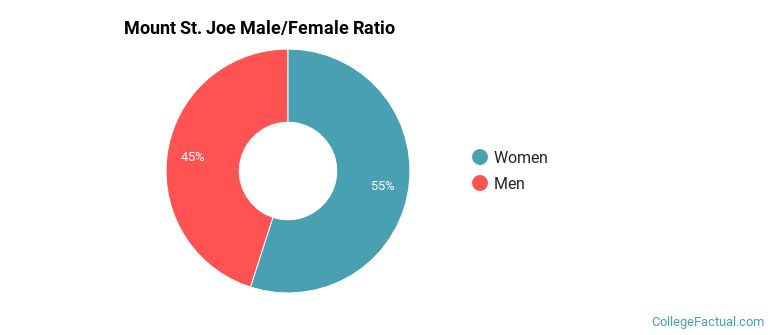
For the gender breakdown for all students, go here.
Mount St. Joe Racial/Ethnic Breakdown of Undergraduates
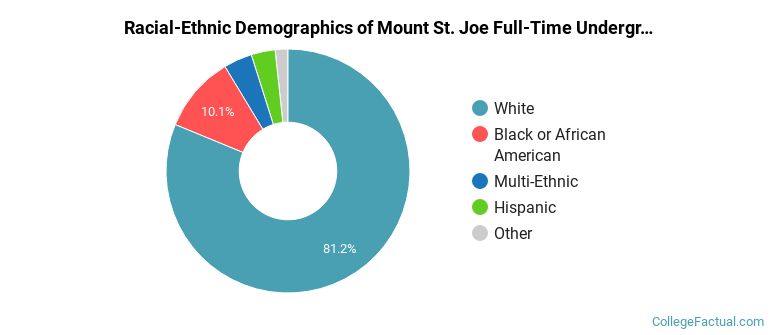
| Race/Ethnicity | Number |
|---|---|
| White | 810 |
| Black or African American | 101 |
| Multi-Ethnic | 37 |
| Hispanic | 36 |
| Asian | 11 |
| Unknown | 5 |
| Native Hawaiian or Pacific Islander | 0 |
| International | 0 |
See racial/ethnic breakdown for all students.
Male/Female Breakdown of Graduate Students
About 68% of full-time grad students are women, and 32% men.
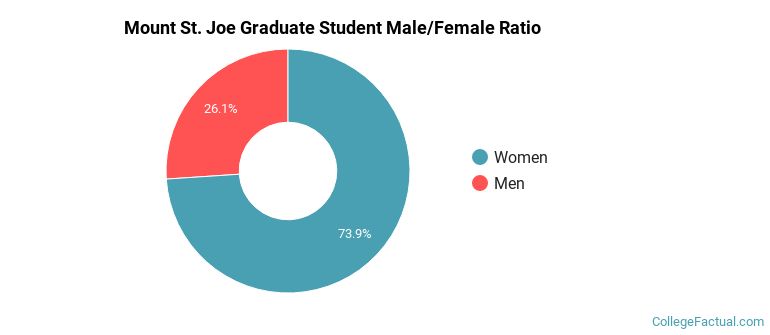
For the gender breakdown for all students, go here.
Mount St. Joe Racial-Ethnic Breakdown of Graduate Students
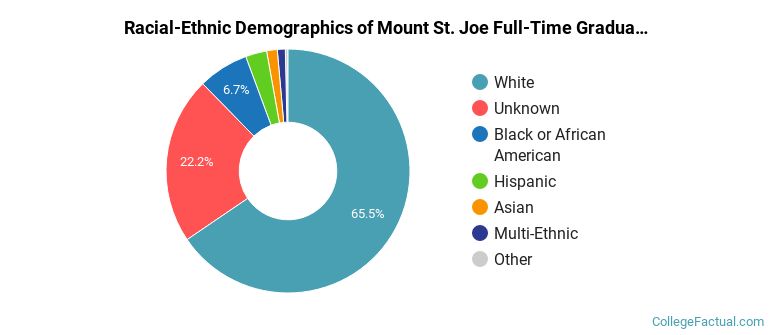
| Race/Ethnicity | Number |
|---|---|
| White | 190 |
| Unknown | 29 |
| Black or African American | 27 |
| Asian | 8 |
| Hispanic | 6 |
| Multi-Ethnic | 2 |
| Native Hawaiian or Pacific Islander | 0 |
| International | 0 |
See racial/ethnic breakdown for all students.
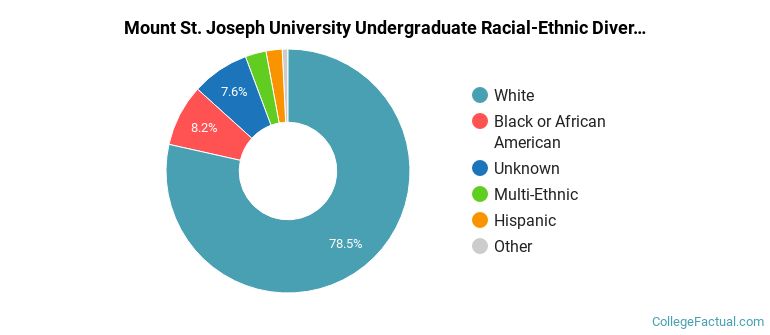
| Race/Ethnicity | Number |
|---|---|
| White | 1,644 |
| Black or African American | 167 |
| Unknown | 97 |
| Multi-Ethnic | 52 |
| Hispanic | 49 |
| Asian | 19 |
| International | 1 |
| Native Hawaiian or Pacific Islander | 0 |

There are approximately 1,278 female students and 753 male students at Mount St. Joe.
Mount St. Joe ranks 1,307 out of 2,183 when it comes to geographic diversity.
20.08% of Mount St. Joe students come from out of state, and 0% come from out of the country.
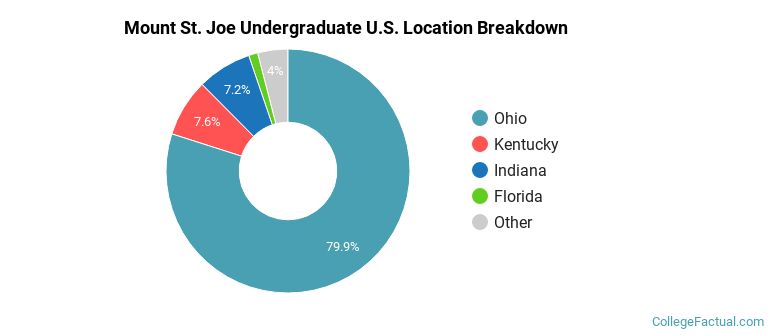
The undergraduate student body is split among 13 states (may include Washington D.C.). Click on the map for more detail.
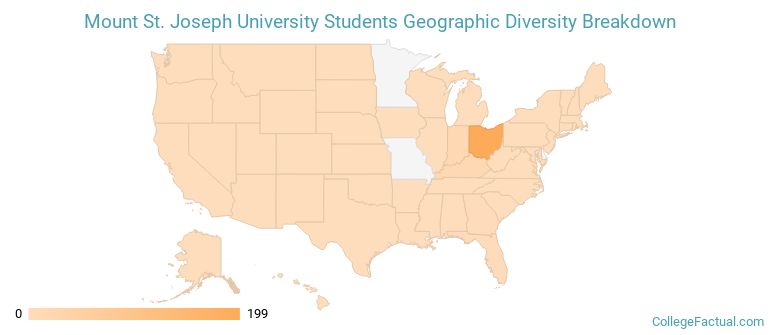
| State | Amount |
|---|---|
| Ohio | 199 |
| Kentucky | 19 |
| Indiana | 18 |
| Florida | 3 |
| Georgia | 2 |
A traditional college student is defined as being between the ages of 18-21. At Mount St. Joe, 42.34% of students fall into that category, compared to the national average of 60%.
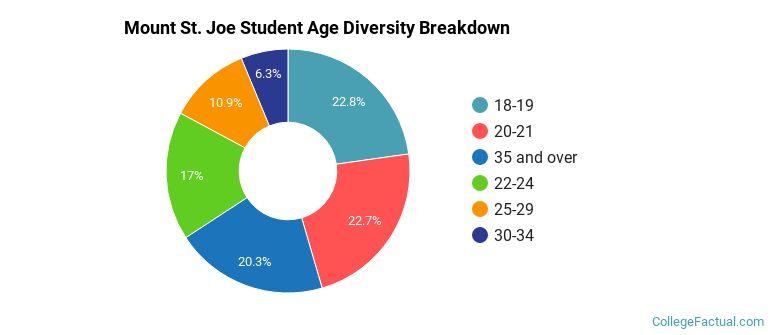
| Student Age Group | Amount |
|---|---|
| 18-19 | 426 |
| 20-21 | 425 |
| 35 and over | 380 |
| 22-24 | 319 |
| 25-29 | 204 |
| 30-34 | 117 |
| Under 18 | 0 |
Footnotes
*The racial-ethnic minorities count is calculated by taking the total number of students and subtracting white students, international students, and students whose race/ethnicity was unknown. This number is then divided by the total number of students at the school to obtain the racial-ethnic minorities percentage.
References